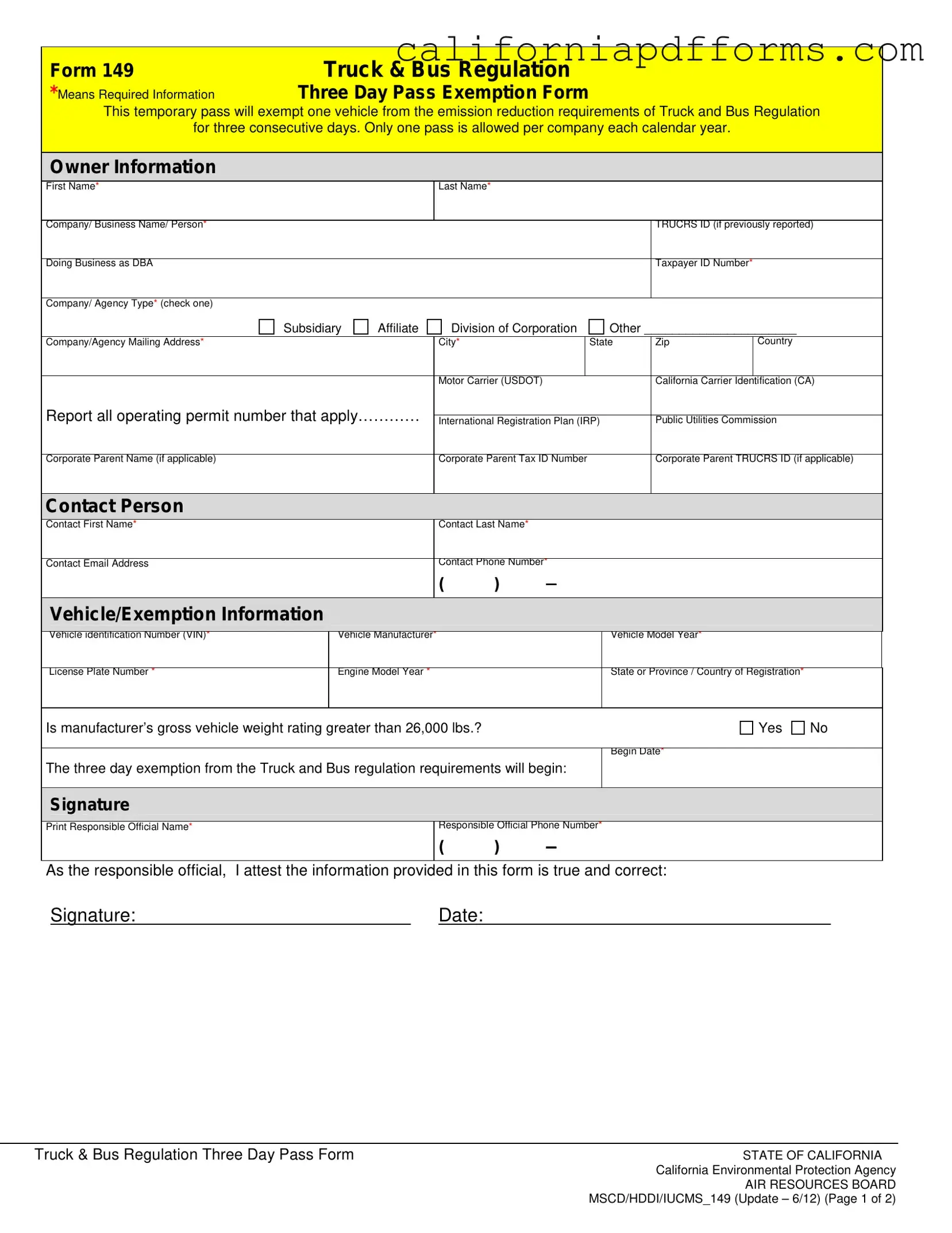What is a Three Day Pass?
A Three Day Pass is a temporary permit that allows a fleet owner to operate one vehicle per calendar year in California that does not meet the emission reduction requirements of the Truck and Bus regulation. The three-day period begins at 12:00 am on the date specified on the form.
How do I obtain a Three Day Pass?
To obtain a Three Day Pass, complete the request form and submit it to the Air Resources Board (ARB) at least three days before the vehicle enters California. The pass will be granted as long as it is the first request made by the fleet in the calendar year. If the ARB does not respond by the planned entry date, the vehicle may operate in California for the requested three-day period. The vehicle operator must present a copy of the form to ARB personnel upon request. Failure to do so may result in penalties.
Mail the request to:
-
Truck & Bus Reporting, 5th Floor
-
PO BOX 2815
-
California Air Resources Board
-
Sacramento, CA 95812
You may also fax the form to (916) 323-5526 or email it to trucrs@arb.ca.gov.
Is there a limit on the number of miles I can operate under this pass?
There are no mileage limits for a vehicle operating during the three-day period specified in an approved Three Day Pass.
Do I need a Three Day Pass?
If you reported the vehicle as part of your fleet to use the phase-in option or flexibility options in the regulation, and your fleet is in compliance, you do not need a Three Day Pass. However, you should use a Three Day Pass in the following situations:
-
If you reported to use flexibility options but need to temporarily bring a vehicle into California that you did not report.
-
If you are using the model year schedule to comply (not required to report) and want to temporarily bring a noncompliant truck into California.
What is the engine model year schedule for heavier trucks?
The engine model year schedule for heavier trucks (more than 26,000 lbs GVWR) is as follows:
-
2010: Not Required
-
1993 & Older: Not Required
-
1994-1995: Not Required until January 1, 2016
-
1996-1999: Compliance required by January 1, 2020
-
2000-2004: Compliance required by January 1, 2021
-
2005-2006: Compliance required by January 1, 2022
-
2007 & Newer: Already Equipped by January 1, 2023
What if my truck has a gross vehicle weight rating between 14,001 and 26,000 pounds?
If your truck has a gross vehicle weight rating (GVWR) between 14,001 and 26,000 pounds, your first compliance date is not until January 1, 2015.
An overview of the Truck and Bus regulation compliance requirements is available at
this link
.
If you have any questions or need help completing the form, contact the ARB at 866-6DIESEL (866-634-3735) or email 8666diesel@arb.ca.gov.
